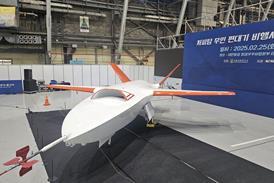Ramon Lopez/WASHINGTON DC
The US National Transportation Safety Board (NTSB) says that newly certificated long-haul commercial passenger aircraft should have an automatic system for retracting speed brakes if the pilots start an emergency climb.
The system could have saved the American Airlines Boeing 757, which crashed at Cali, Colombia, in December 1995, killing 159 people, says the NTSB. Retrofit must also be evaluated, the NTSB insists, as well as the fitting of enhanced ground-proximity warning systems (EGPWS).
The recommendations to the Federal Aviation Administration are prompted by the just-published Cali accident report. Colombian investigators ruled that pilot errors, reflecting poor pilot situational-awareness, were to blame for the crash into a mountainside at night. The NTSB agrees, but adds that if the pilots had retracted the aircraft's airbrakes when they pulled up in response to a GPWS alert, the aircraft might have just missed the mountain top.
Aeronautica Civil, Colombia's civil aviation authority, reports that the crew was offered an approach to the south-heading runway. They accepted and were cleared by air traffic control for the "Rozo one" approach. Cockpit-voice- recorder transcripts show the crew did not know they had just passed the Tulua VHF beacon at the beginning of the approach.
Then, the report says, a pilot entered into the flight management computer (FMC) an incorrect navigation-beacon identification code for Rozo, an on-track non-directional beacon near Cali, south of the aircraft. The selection, however, picked up Romeo, near Bogota to the north-east, so the aircraft turned that way. This is partly blamed on the fact that the FMC database does not recognise the same beacon identifications as are published on pilots' charts. .
Meanwhile, the pilots elected to continue their speed brakes-out descent. When the GPWS sounded a "pull-up" alert the pilots reacted, but failed to retract the speed brakes. The flight-data recorder also shows the pilots pulled the stick back too far, momentarily going "through" the stick-shaker stall warning.
The NTSB also recommends an angle-of-attack indicator for all, large passenger aircraft, and resolution of beacon-identification discrepancies between navigation charts and FMC databases.
Source: Flight International























